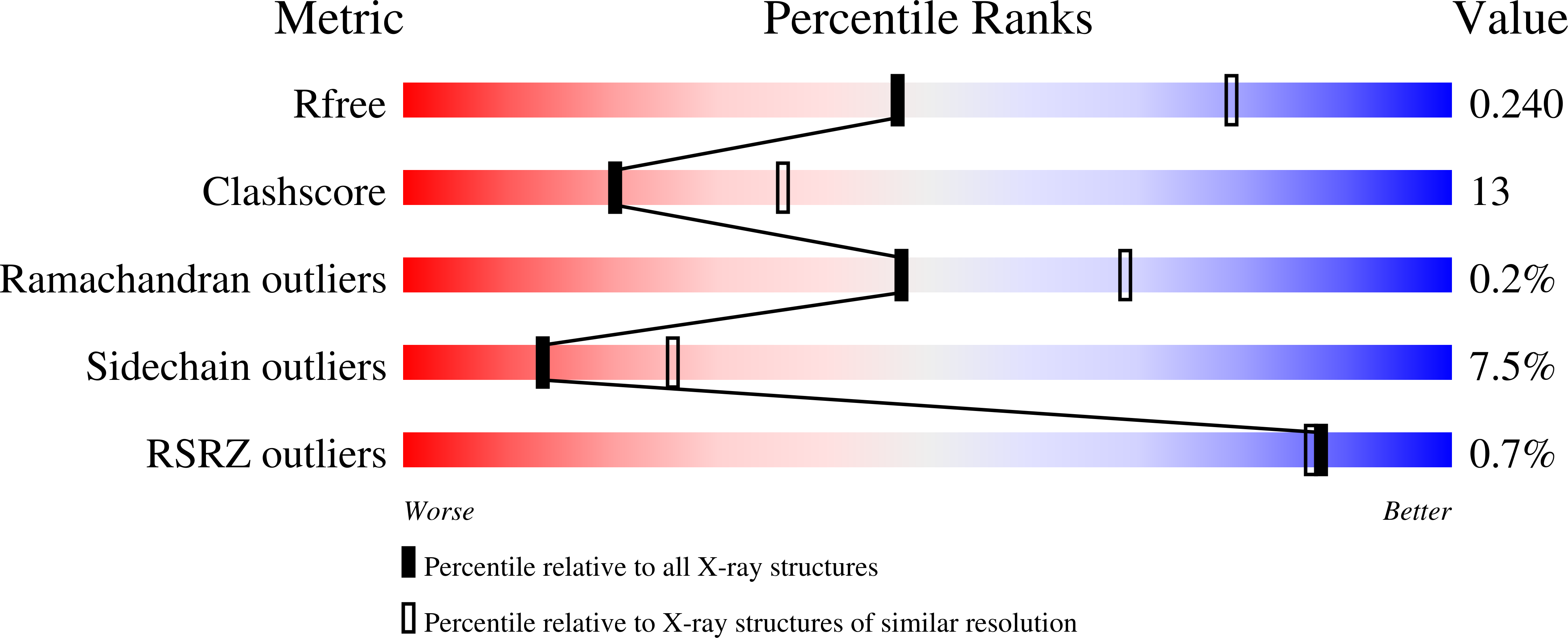Structural Determinants of Clostridium difficile Toxin A Glucosyltransferase Activity.
Pruitt, R.N., Chumbler, N.M., Rutherford, S.A., Farrow, M.A., Friedman, D.B., Spiller, B., Lacy, D.B.(2012) J Biol Chem 287: 8013-8020
- PubMed: 22267739
- DOI: https://doi.org/10.1074/jbc.M111.298414
- Primary Citation of Related Structures:
3SRZ, 3SS1 - PubMed Abstract:
The principle virulence factors in Clostridium difficile pathogenesis are TcdA and TcdB, homologous glucosyltransferases capable of inactivating small GTPases within the host cell. We present crystal structures of the TcdA glucosyltransferase domain in the presence and absence of the co-substrate UDP-glucose. Although the enzymatic core is similar to that of TcdB, the proposed GTPase-binding surface differs significantly. We show that TcdA is comparable with TcdB in its modification of Rho family substrates and that, unlike TcdB, TcdA is also capable of modifying Rap family GTPases both in vitro and in cells. The glucosyltransferase activities of both toxins are reduced in the context of the holotoxin but can be restored with autoproteolytic activation and glucosyltransferase domain release. These studies highlight the importance of cellular activation in determining the array of substrates available to the toxins once delivered into the cell.
Organizational Affiliation:
Department of Pathology, Microbiology, and Immunology, Vanderbilt University School of Medicine, Nashville, Tennessee 37232, USA.
















